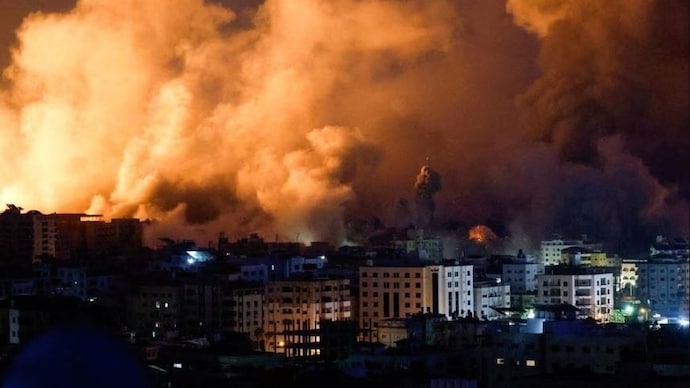What are white phosphorus bombs that Israel used in Gaza? All you need to know
Israel has been accused of using white phosphorus bombs in the Gaza Strip. Here's all you need to know about white phosphorus explosives -- from their usage in warfare to why they generate controversy.

The Human Rights Watch on Thursday said that Israel used white phosphorus bombs in the Gaza Strip in retaliatory action against last weekend’s attack by Hamas. It condemned the use of the controversial munition, which can severely burn people and set fire to civilian structures, in such a densely populated area.
The Israel Defense Forces said it was "currently not aware of the use of weapons containing white phosphorus in Gaza." Notably, Israel has used white phosphorus bombs in the Gaza Strip on several occasions. In 2009, during the Gaza War, Israel used white phosphorus bombs in densely populated areas, resulting in civilian casualties. In 2014, during the Operation Protective Edge, Israel again used white phosphorus bombs in Gaza, causing widespread damage.
The use of white phosphorus bombs in civilian areas is a violation of international law. Israel has defended its use of white phosphorus bombs, arguing that they are necessary to protect its troops from rocket attacks.
Here's all you need to know about white phosphorus bombs:
White phosphorus bombs are categorised as incendiary weapons, which means that in addition to their destructive explosive force, they have the capacity to propagate fire.
In this scenario, the fire originates from the combustion of phosphorus, which burns at an approximate temperature of 1,500 degrees Fahrenheit.
White phosphorus bombs can disperse this fire across an area spanning several hundred square yards, and the phosphorus continues to burn until it is entirely consumed, relying on the presence of oxygen readily available in the air.
Injuries resulting from white phosphorus bombs can be more severe and pose greater challenges for medical treatment when compared to injuries caused by conventional bombs.
Medical professionals require specialised training to address these specific injuries and safeguard themselves against phosphorus burns during the treatment process.
WHAT IS THE WHITE PHOSPHORUS BOMB?
White phosphorus, a wax-like chemical substance, often appears yellowish or colourless and is associated with a garlic-like odour, according to some.
Upon exposure to oxygen, it undergoes instantaneous ignition and serves a predominant role in weaponry due to its ability to burn rapidly and brightly.
During daylight operations, white phosphorus is employed to generate smokescreens, as it emits copious amounts of smoke when ignited. Its quick ignition can lead to fast-spreading ground fires, and once ignited, it proves exceptionally challenging to extinguish. Notably, white phosphorus adheres to various surfaces, including skin and clothing.
These attributes collectively render it highly perilous for civilians, as it can induce deep burns, even penetrating bone, and may rekindle after initial treatment.
REGULATIONS OF PHOSPHORUS USE IN WARFARE
Phosphorus, despite its incendiary properties, is subject to tight regulation rather than a complete ban under international law. Surprisingly, it is not classified as a chemical weapon according to the Chemical Weapons Convention.
When deployed as a weapon, phosphorus has the capability to unleash devastating fires upon its targets, causing indiscriminate damage. Consequently, its utilisation in proximity to civilians is strictly prohibited, as international law mandates a clear distinction between civilian and military entities.
The Human Rights Watch has documented instances of civilian casualties resulting from the deployment of white phosphorus in various war zones worldwide.
